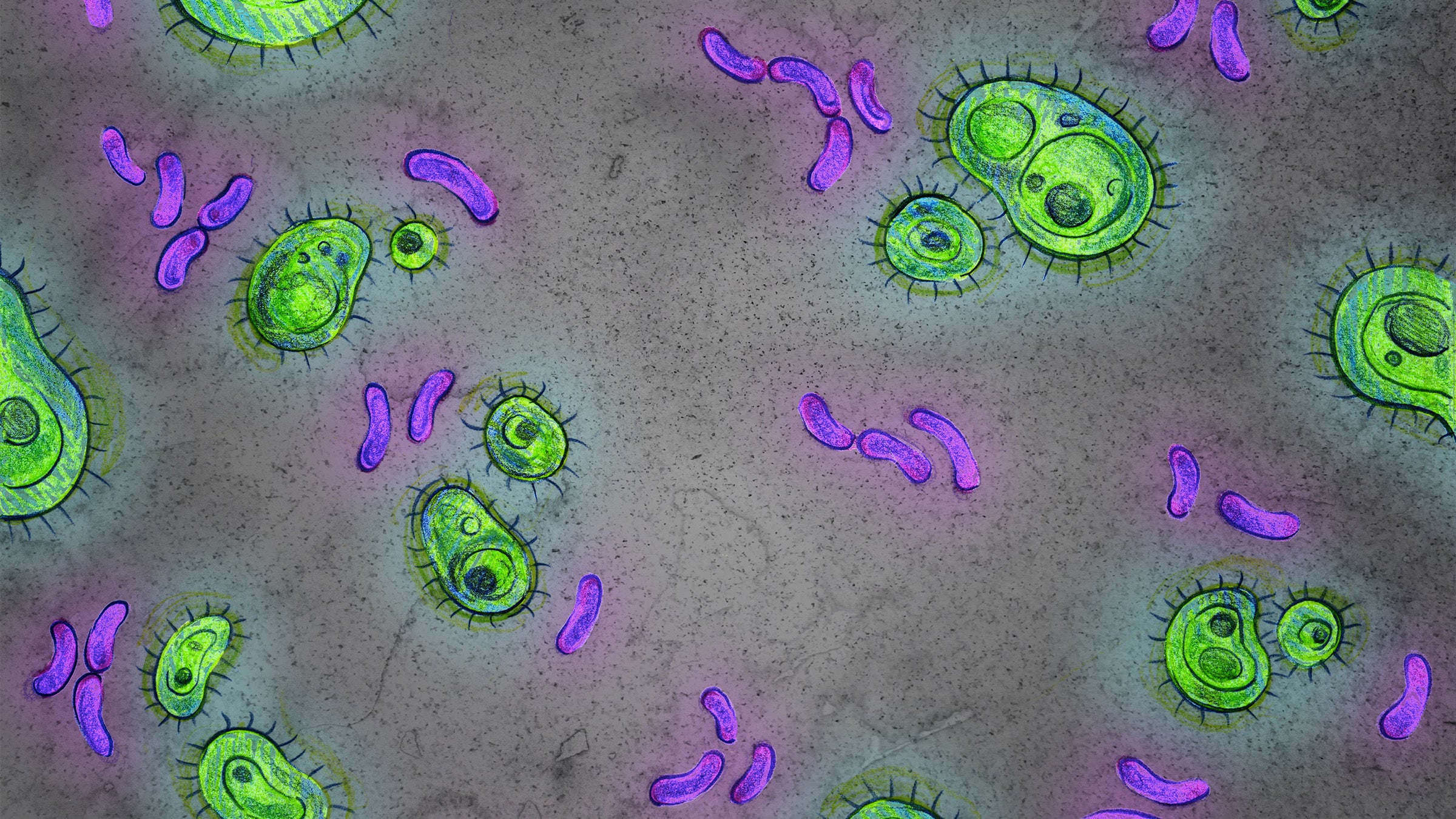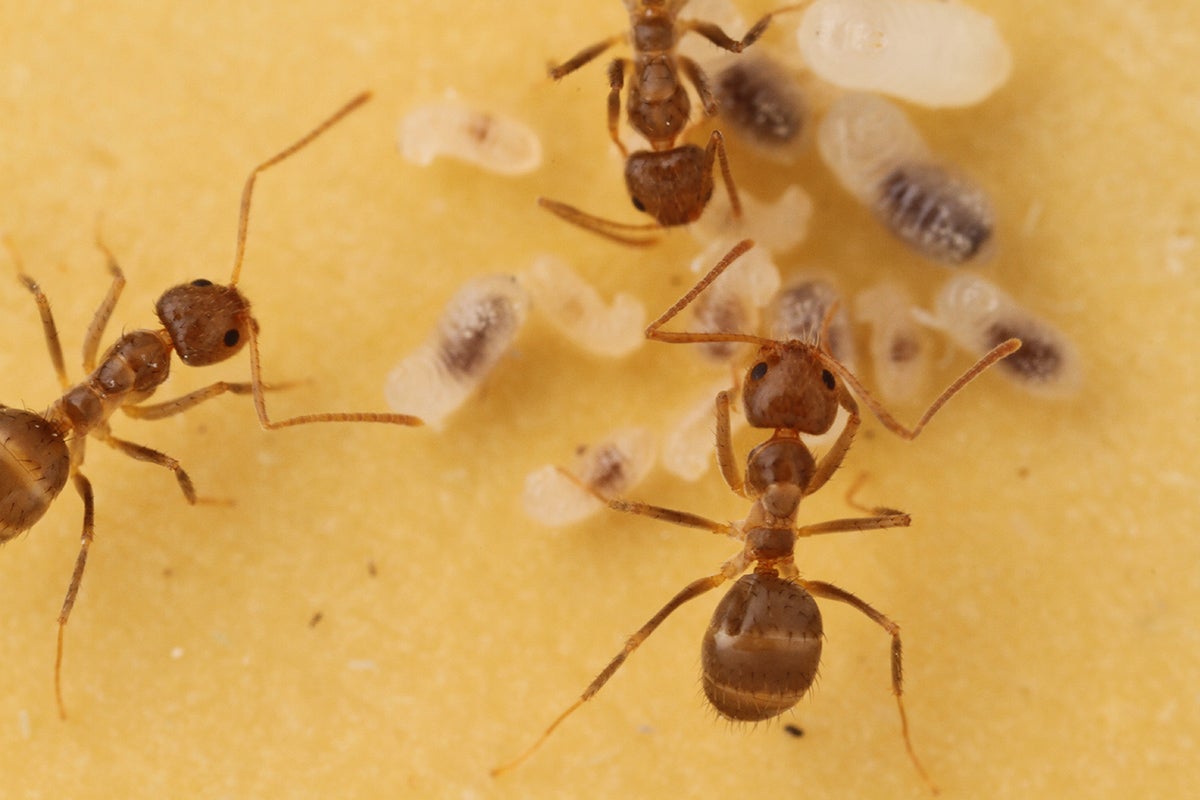Some Bacteria Have Lived in the Human Gut Since Before We Were Human
New study suggests that evolution plays a larger role than previously known in people's intestinal-microbe makeup.

Some of the bacteria in our guts were passed down over millions of years, since before we were human, suggesting that evolution plays a larger role than previously known in people's intestinal-microbe makeup, according to a new study in the journal Science.
The bacteria that the researchers studied guide the early development of our intestines, train our immune systems to fight pathogens and may even affect our moods and behavior.
The research, which included an international team of scientists, was led by Howard Ochman, a professor of integrative biology at The University of Texas at Austin, and Andrew Moeller, a former graduate student at UT Austin, currently a postdoctoral researcher at the University of California, Berkeley.
"It's surprising that our gut microbes, which we could get from many sources in the environment, have actually been co-evolving inside us for such a long time," says Ochman, who noted that the microbes were passed down over hundreds of thousands of host generations.
As humans and the African great apes evolved into distinct species from a common ancestor, bacteria present in their common ancestor also evolved into distinct strains associated with each host, the scientists found.
Adding further weight to the analysis, the scientists found genetic evidence that the bacteria split into distinct strains at about the same times as their hosts were splitting into distinct species. One such bacterial split happened about 15.6 million years ago as the gorilla lineage diverged from the other hominids. The other bacterial split happened about 5.3 million years ago as the human lineage separated from the lineage leading to chimps and bonobos.
"We've known for a long time that humans and our closest relatives, the great apes, harbor these bacteria in our guts," says Moeller, "and the biggest question we wanted to answer is, where did these bacteria come from? Did we get them from our environment or from our evolutionary history? And how long have they persisted in host lineages?"
Before this study, scientists disagreed about whether strains of gut microbes have continued within individual hominid lineages over timescales long enough to lead to cospeciation, a process by which two species evolve in parallel. The persistence of some microbes might have been threatened by changes in diet, geography or the use of antibiotics.
The researchers studied fecal samples collected from wild African great apes—chimpanzees, bonobos and gorillas—and also from people living in Connecticut. Fossil and genetic evidence have established that all four species, known as hominids, evolved from a common ancestor that lived more than 10 million years ago.
Fecal samples contain microbes shed from a host animal's gut. The scientists used gene sequencing to analyze all the different versions of one specific bacterial gene present in each fecal sample. From these data, they reconstructed evolutionary trees for three groups of gut bacteria that make up over 20 percent of the human gut microbiome.
For two of those groups, Bacteriodaceae and Bifidobacteriaceae, the bacterial evolutionary trees closely resemble the hominid evolutionary tree. There are some subtle differences, however, such as an individual bacterial strain disappearing from one of the four host species over time.
The third bacterial family tree, for a group known as Lachnospiraceae, was more complicated. There were apparently at least four times when these bacteria were transferred between different host species. The researchers speculate that because these bacteria form spores and can thus survive outside their hosts for long periods, they were easily passed between species.
The researchers are not certain how these three ancient strains of microbes were passed down from one host generation to the next for millions of years. Prior research shows that we receive our first inoculation of gut microbes from our mothers as we pass through the birth canal. Throughout life, we also receive microbes from social interactions. The researchers suspect both modes of transmission are responsible for maintaining our multigenerational relationship with our bacterial BFFs.
"What's most exciting to me is the possibility that this codiversification between bacteria and hosts could extend much further back in time," says Moeller. "Maybe we can trace our gut microbes back to our common ancestors with all mammals, all reptiles, all amphibians, maybe even all vertebrates. If that's true, it's amazing."
In addition to Ochman and Moeller, the study's co-authors are: Alejandro Caro-Quintero at Corpoicá C.I Tibaitata (Colombia); Deus Mjungu at the Gombe Stream Research Center (Tanzania); Alexander Georgiev at Northwestern University and Harvard University; Elizabeth Lonsdorf at Franklin & Marshall College; Martin Muller at the University of New Mexico; Anne Pusey at Duke University; Martine Peeters at the University of Montpellier (France); and Beatrice Hahn at the University of Pennsylvania.
This work was supported by funding from the National Institutes of Health, the Agence Nationale de Recherche sur le Sida, the Jane Goodall Institute, the Arthur L. Greene Fund and Harvard University.
MORE INFO
If these bacteria play such an important role in human health, could that help explain why they have persisted and cospeciated with us for millions of years?
Moeller says they might have persisted because they've helped make us fitter. On the other hand, maybe they are persisting because they're good at adapting to our guts, despite negative effects they might have on us. In other words, the bacteria might be winning an evolutionary arms race. After all, the evolutionary pressure to reproduce is stronger than their relationship with their hosts.
"There is probably truth in both of the alternatives," says Moeller. "For example, removing the gut microbiota from a mouse impairs the development of blood vessels in the gut, which suggests the bacteria are good. On the other hand, we know many of the 'good' bacteria can become pathogens under the right conditions."
The researchers found additional evidence to support their finding that bacteria cospeciated with hominids for millions of years. That evidence came from subtle changes in bacterial genes over time.
Based on the rate at which the target bacterial gene tends to mutate, the researchers estimated when certain strains of bacteria diverged from each other. According to the new analysis, bacterial strains currently living in chimps and humans diverged about 5.3 million years ago. That coincides with estimates of when the host lineages—leading to chimps and humans—split from each other, estimated from fossil and host genetic evidence to have happened between 5.2 and 6.4 million years ago.
The researchers estimate that bacterial strains in humans and gorillas began diverging about 15.6 million years ago. That also falls within estimates of when the lineage that led to gorillas split from the lineage leading to humans, chimps and bonobos, which has been estimated to have occurred between 7.1 and 19 million years ago.
"We already knew from the first part of this study that the relationships among the bacteria mirrored the host relationships," says Moeller, "but showing that the bacteria diverged from each other around the same time that their hosts diverged from each other was one more line of evidence that they really had cospeciated with each other, that we really have inherited the bacteria from a common ancestor with gorillas and chimpanzees."
Fecal samples for this study were collected from wild chimpanzees in Gombe National Park, Tanzania; from wild bonobos at three field sites in the Democratic Republic of the Congo; and from wild gorillas at two field sites in Cameroon.



